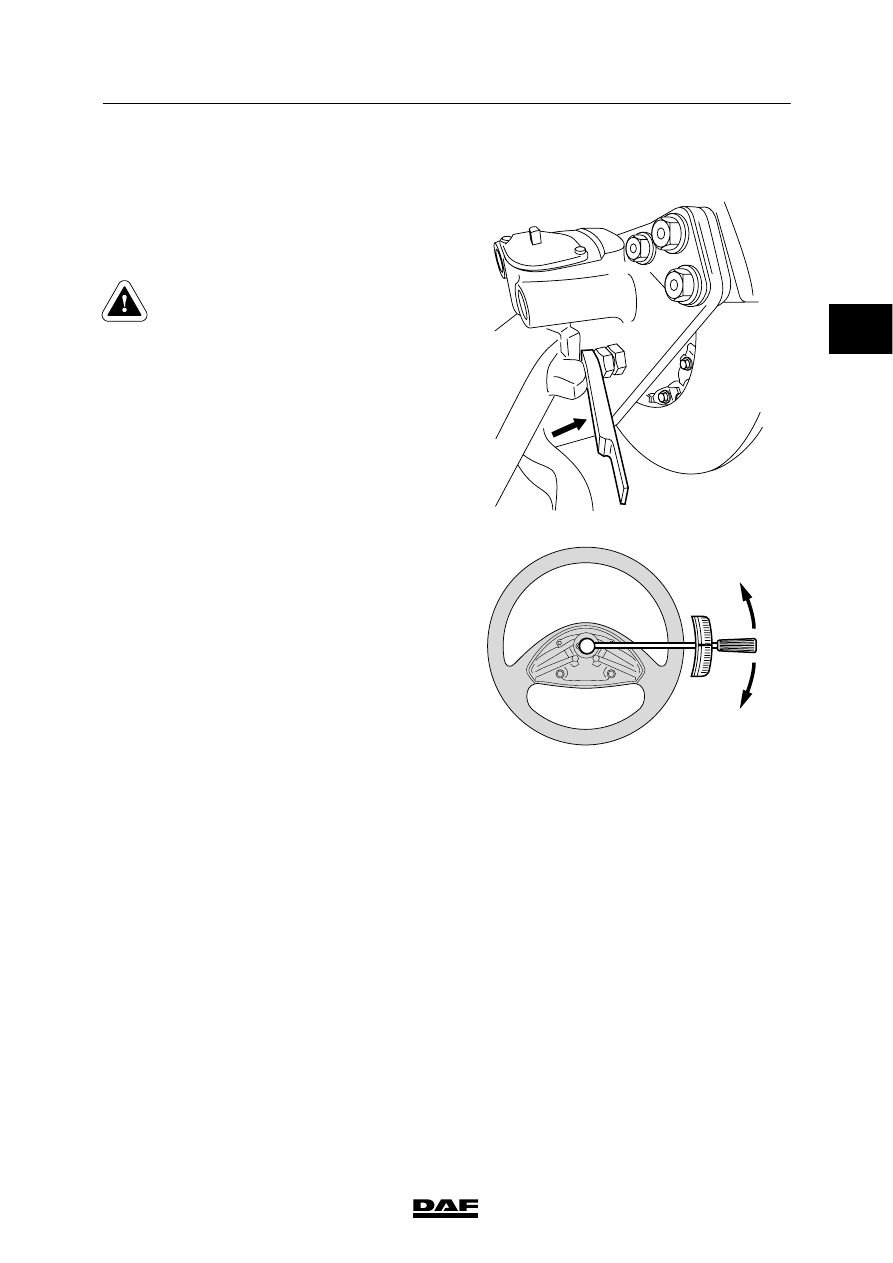DAF LF45, LF55 Series. Manual - part 496

7
LF45/55 series
Inspection and adjustment
STEERING GEAR, GENERAL
3-3
Testing the maximum system pressure.
1.
Run the engine at idling speed.
2.
Activate the steering gear and fit a 15 mm
filler piece, special tool (DAF no. 0535996),
between the adjusting bolt or the axle stop
on the swivel axle and axle-housing stop.
Be careful when fitting the 15 mm
filler piece between the adjusting
bolt and the axle stop, as there is a
danger of limbs getting trapped.
S7 00 598
3.
Fit a torque wrench with a dial to the
steering wheel attachment bolt. Tighten the
bolt to a tightening torque of 45 Nm on the
torque wrench.
4.
Take the maximum pressure reading on the
pressure gauge (the maximum pressure
should not be held for more than 5
seconds). Compare the reading with the
specified value, see “Technical data”.
Note:
If the reading deviates more than 10% from
the specified value, the cause should be
identified using the test case.
5.
Repeat the measurement using the 15 mm
filler piece at the other end of the front axle.
6.
Retighten the steering-wheel attachment
bolt to the specified tightening torque, see
“Technical data”.
7.
Remove the pressure gauge and the
T-piece.
8.
Check the steering oil level in the reservoir
and top up if necessary.
9.
Bleed the steering gear, see “Draining,
filling and bleeding”.
45Nm
45Nm
S7 00 611
2
ᓻ 200322